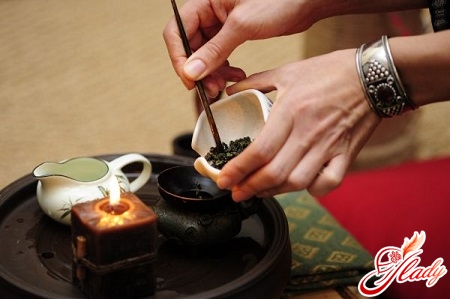 Are you waiting for spring with dread?While all people are enjoying the blossoming of nature and warm days, do you spend your time at home, in the company of a handkerchief and nasal spray? Most likely, you are a victim of the so-called seasonal allergy or hay fever. Hay fever. This disease is one of the most common in both adults and children. Hay fever in children is the most common type of allergic disease. Hay fever is a disease of allergic origin and, as a rule, has a chronic form. Hay fever symptoms are as follows:
Are you waiting for spring with dread?While all people are enjoying the blossoming of nature and warm days, do you spend your time at home, in the company of a handkerchief and nasal spray? Most likely, you are a victim of the so-called seasonal allergy or hay fever. Hay fever. This disease is one of the most common in both adults and children. Hay fever in children is the most common type of allergic disease. Hay fever is a disease of allergic origin and, as a rule, has a chronic form. Hay fever symptoms are as follows:
- Allergic inflammation and edema of the mucous membranes of the nasal passages and respiratory tract, which is caused by exposure to the body of pollen from plants.
- Seasonal runny nose, starting during the flowering of certain plants.
- Allergic conjunctivitis.
Despite the widespread use of thisdiseases, often, unfortunately, it is not diagnosed, or is diagnosed untimely. And timely diagnosis is very important - after all, it is much easier to take preventive measures and not allow the disease to develop than to fight it later in an advanced form. Undiagnosed pollinosis is very often mistaken by doctors for a viral disease at best, for which antiviral drugs are prescribed, which are absolutely useless for allergic reactions. In the worst case, doctors diagnose the patient with some inflammatory disease and prescribe antibiotics for treatment. Antibiotics in this case will not bring anything to the body except harm. In this regard, it is most difficult for small children. As you know, allergists mostly see children older than two or three years. And pollinosis often occurs in one-year-old babies. And if the attending physician - pediatrician, who observes the baby, is not experienced enough and does not understand the reason for the baby's illness, taking unnecessary and sometimes dangerous drugs for the body is almost inevitable. That is why all parents should have at least a general idea of what pollinosis is, the causes of its occurrence and its symptoms. If parents have this information, they will be able to understand in time what is happening to their baby and consult a doctor - an allergist. In this way, they will provide an invaluable service to their baby. Pollinosis, if not recognized in time, can lead to quite serious complications - a chronic allergic reaction of the body to a certain allergen, weakening of the immune system and even the development of such an unpleasant and dangerous disease as bronchial asthma.
Causes of Pollinosis
Hay fever begins to develop whenif the human body sharply increases its sensitization to the pollen of one or more plants typical for the climate zone in which the sick person lives. Sensitization is the sensitivity of the body to the impact of any environmental factor. If we take the most average data as a basis, in Russia there are three periods of flowering of the main plants that most often lead to the development of allergic reactions in humans, in particular, cause hay fever:
- The spring flowering period begins in April-May. In this period, such trees and bushes begin to bloom, like hazel, oak, alder, birch and others.
- The summer flowering season begins in June and July. At this time, grassy grasses, such as wheat grass, timothy grass, fescue grass, bluegrass and other common plants, are actively blooming.
- The period of summer-autumn flowering occurs inend of August - September. At this time, there is a flowering of those plants that belong to the family of mazes or comatose - ragweed, quinoa, wormwood.
During the period of active flowering of plants, pollenis capable of spreading very, very widely. This is due to the fact that pollen is tiny in size, but is released in huge quantities and is easily carried by the wind for many kilometers around the plant itself. If a person is prone to allergic diseases and hay fever, upon contact with pollen, he will immediately feel a significant deterioration in his health. However, hay fever can often manifest itself to varying degrees of severity outside the flowering period of plants - for example, in autumn or winter. In this case, be sure to try to find the cause - a provoking factor that has an extremely negative effect on the human body. This factor can be almost anything: strong smells of paint, household chemicals, perfumes, smoke and even extremely low air temperatures - the so-called allergy to cold. Many sick people are trying to find an answer to the question of why someone suffers from allergic reactions, while someone is completely immune to them. In fact, genetics and heredity play a huge role in the transmission of a tendency to allergic reactions. Genes responsible for allergies are most often inherited by a person from a father or mother, and sometimes from both at once. In the event that only one of the parents suffered from a tendency to allergic reactions, the chances of inheriting such a gene are approximately 25%. But if both parents suffered from allergies, the chances rapidly increase to 50-60%.
Development of Pollinia
 Hay fever develops according to the following standard procedure:scheme. Through the respiratory tract, pollen penetrates and settles on the mucous membrane of the lungs and the respiratory tract themselves. Pollen also gets into and remains on the mucous membrane of the eye and the eyeball itself. In the body, immediately after pollen penetrates it, the process of recognizing the allergen is launched. The cells of the immune system are responsible for this process. They immediately begin to produce antibodies (protective bodies) that act on the foreign agent in an overwhelming way. It is this process that allergists call the process of sensitization. A similar mechanism of the developing tendency of the body to allergic reactions in the presence of a predisposition in the child can begin at almost any age of the child. To start launching such a mechanism, as a rule, a very small amount of pollen is enough. Externally, such a sensitization process does not manifest itself with absolutely any symptoms and signs. Often, several months or even a year pass from the first contact with the allergen to the clinical manifestation of signs of an allergic disease. For example, a child came into contact with ragweed pollen. If a child is predisposed to allergic reactions, the child's body will immediately begin a process in which the child's immune system will recognize a foreign agent, in this case, ragweed pollen. After this, the body will immediately begin to produce protective substances - antibodies, which will remain in the child's body until the next contact - next year - with ragweed pollen. And then parents can observe the development of hay fever in all its "beauty". This process is called the "resolution" process and is the final phase in the development of allergic hay fever. This is why parents are often perplexed as to why an allergy occurs for no apparent reason, and to allergens to which the child has never had an allergy before. In fact, all this time the child's body was undergoing a process of sensitization, which resulted in an allergy.
Hay fever develops according to the following standard procedure:scheme. Through the respiratory tract, pollen penetrates and settles on the mucous membrane of the lungs and the respiratory tract themselves. Pollen also gets into and remains on the mucous membrane of the eye and the eyeball itself. In the body, immediately after pollen penetrates it, the process of recognizing the allergen is launched. The cells of the immune system are responsible for this process. They immediately begin to produce antibodies (protective bodies) that act on the foreign agent in an overwhelming way. It is this process that allergists call the process of sensitization. A similar mechanism of the developing tendency of the body to allergic reactions in the presence of a predisposition in the child can begin at almost any age of the child. To start launching such a mechanism, as a rule, a very small amount of pollen is enough. Externally, such a sensitization process does not manifest itself with absolutely any symptoms and signs. Often, several months or even a year pass from the first contact with the allergen to the clinical manifestation of signs of an allergic disease. For example, a child came into contact with ragweed pollen. If a child is predisposed to allergic reactions, the child's body will immediately begin a process in which the child's immune system will recognize a foreign agent, in this case, ragweed pollen. After this, the body will immediately begin to produce protective substances - antibodies, which will remain in the child's body until the next contact - next year - with ragweed pollen. And then parents can observe the development of hay fever in all its "beauty". This process is called the "resolution" process and is the final phase in the development of allergic hay fever. This is why parents are often perplexed as to why an allergy occurs for no apparent reason, and to allergens to which the child has never had an allergy before. In fact, all this time the child's body was undergoing a process of sensitization, which resulted in an allergy.
Symptoms of hay fever
When talking about the symptoms of hay fever, the first thingIt should be noted that pollinosis is most often an exclusively seasonal disease that recurs cyclically, every year, during the active flowering phase of certain plants. Pollinosis always occurs quite typically and an experienced allergist will have no trouble diagnosing the disease in time. As a rule, pollinosis allergy has the following symptoms:
- A sick person begins conjunctivitis of allergic origin. There is reddening of the mucous membrane of the eyes, itching, lachrymation, edema of the eyelids and photophobia.
- Simultaneously with conjunctivitis in a sick personthere is an allergic rhinitis, accompanied by swelling of the nasal mucosa, itching and burning in the nose, the release of abundant transparent contents.
- Sneezing.
As a result of swelling of the nasopharynx, it is oftenhearing and smell may be significantly reduced, and sick people often complain of severe headaches. All these symptoms of hay fever are most pronounced and fully expressed in the morning. This is explained by the fact that it is in the morning hours that the level of pollen in the air is the highest. The main difference between hay fever and a common acute respiratory infection is the absence of hyperthermia. The body temperature of a sick person almost never rises above the physiological norm. If a sick person has hay fever, during examination the doctor will not notice the typical redness of the mucous membrane of the throat and enlargement of the submandibular and ear lymph nodes for acute respiratory infections. If a person suffering from hay fever has the above symptoms, this indicates an additional respiratory disease. As a rule, the combined course of these two diseases significantly increases the severity of the course and reduces the effectiveness of treatment for each of them. Antiviral drugs significantly reduce the effect of antihistamines on the human body. The most severe form of pollinosis is considered to be the pollinosis that accompanies bronchial asthma, which has an allergic nature of the disease. This form of asthma is accompanied by allergic conjunctivitis and a runny nose. During the flowering period of plants, a sick person experiences more frequent than usual attacks of suffocation. In the event that a person suffers from bronchial asthma together with allergic pollinosis, attacks of pollinosis proceed a little differently and are accompanied by the following symptoms:
- A person can experience a severe headache
- Also, there may be increased irritability and even tearfulness.
- Weakness, sweating, chills.
- Raise body temperature to 38 degrees.
- A sick person experiences a feeling of increased fatigue.
Diagnosis of pollinosis
If you suspect that you or someone close to youIf you have encountered a disease such as seasonal hay fever, the first thing you need to do is to contact your doctor to rule out acute respiratory diseases or diseases of an inflammatory nature, such as acute bronchitis or pneumonia. If other diseases are excluded, you need to contact an allergist - immunologist. In large cities, they are available in children's clinics, while residents of small towns, as a rule, are forced to go to district centers in multidisciplinary medical institutions. If the patient is a child, the first stage of the examination includes a detailed survey of the parents about the child's development, what diseases he or she suffered from. Then, both adults and children are given a blood test and a sample of the contents of the nasal mucosa for laboratory testing. The next step will be to determine which pollen is an allergen for a particular person. The best time to conduct allergy tests is winter, when the irritant - in this case, pollen - is absent, and medications do not enter the patient's body. This allows us to obtain a more reliable picture of the disease, not "blurred" by taking pharmacological drugs. During tests for different allergens, the level of immunoglobulin E in the blood is determined - these are proteins of the immune system that perform a protective function in the body. Almost all methods of allergy tests are most often carried out on an outpatient basis. As a rule, either children or people with exacerbation of bronchial asthma are hospitalized.
Allergological tests
 Most often, doctors use the following methods to determine the allergen:Allergists use scarification tests or prick tests. These tests are also carried out only in winter, at least two weeks after the end of taking drugs with an anti-allergic effect. These tests are carried out as follows. Several scratches are made on the forearm, on top of which drops of drugs containing a high concentration of various allergens are applied. Or these allergens can be administered by subcutaneous injections. After about 20 minutes, the doctor evaluates the size of each of the scratches, on the basis of which the allergen is identified. The larger the size of the red spot at the site of application of the allergen, the stronger the allergic reaction to this allergen. However, despite the fact that these tests are the most reliable, they are practiced only on children who have reached the age of five. For younger children, doctors recommend an alternative research method - a certain blood test aimed at determining the content of protein antibodies in it, which the immune system produces in response to the effects of a particular pollen. This method of examination is carried out at any time throughout the year, regardless of the patient's health and the pharmacological drugs he or she takes. For small children, this is the only way to diagnose an allergic disease and identify an allergen. Pollinosis during pregnancy is most often diagnosed in a similar way.
Most often, doctors use the following methods to determine the allergen:Allergists use scarification tests or prick tests. These tests are also carried out only in winter, at least two weeks after the end of taking drugs with an anti-allergic effect. These tests are carried out as follows. Several scratches are made on the forearm, on top of which drops of drugs containing a high concentration of various allergens are applied. Or these allergens can be administered by subcutaneous injections. After about 20 minutes, the doctor evaluates the size of each of the scratches, on the basis of which the allergen is identified. The larger the size of the red spot at the site of application of the allergen, the stronger the allergic reaction to this allergen. However, despite the fact that these tests are the most reliable, they are practiced only on children who have reached the age of five. For younger children, doctors recommend an alternative research method - a certain blood test aimed at determining the content of protein antibodies in it, which the immune system produces in response to the effects of a particular pollen. This method of examination is carried out at any time throughout the year, regardless of the patient's health and the pharmacological drugs he or she takes. For small children, this is the only way to diagnose an allergic disease and identify an allergen. Pollinosis during pregnancy is most often diagnosed in a similar way.
Treatment of Pollinosis
Hay fever is a seasonal allergy, treatment is alsois carried out precisely during the period of exacerbation. However, the most effective measure is the prevention of seasonal allergies. Try to completely exclude contact of the sick person with the allergen. If possible, the person needs to leave his region during the flowering of certain plants. This could be a trip to a pioneer camp, to grandma's, or on vacation. If this is not possible, it is necessary to take a number of the following measures:
- Completely exclude country walks on timeflowering plants that cause allergic reactions. Remember that a harmless trip to kebabs on nature can result in a significant deterioration in health.
- Try without extreme need not to leave the room, especially in hot daylight. Remember that in windy weather, the concentration of pollen in the air is approaching the maximum.
- Try to walk in the evening, especiallyuseful walks after the rain or in cloudy weather - at this time there is practically no pollen in the air, it is all nailed to the ground. This time is most optimal for walking.
- It is necessary to stretch a net over the window openings orgauze and constantly moisten them - this will help to retain most of the pollen. Do not forget to carry out wet cleaning in the room in a timely and regular manner. When cleaning, be sure to use a gauze bandage - this will reduce the likelihood of developing an allergic reaction to dust and chemicals.
- Try in the room where the sick person sleeps, remove carpets and soft toys, which are wonderful dust collectors.
Prevention of hay fever also consists offollowing a certain diet. If you have hay fever, a diet will significantly ease your condition. The diet is, in fact, quite simple, but following it helps to avoid many health problems. A sick person needs to exclude only a few products from the diet:
- It is not recommended to eat chicken, especially the whole leg.
- Chicken eggs.
- During the flowering of fruit trees is not recommended the use of apples, pears, cherries and so on.
- In no case should you tolerate the use of a sick person honey or any other products of beekeeping.
- When taking any medications, make sure that they do not contain any plant components.
- Try to avoid eating foods containing any food colorings.
You shouldn't try to treat seasonal allergies,independently prescribing medications to a sick person, based on advertising or advice from people you know. The drug that effectively helps one person can significantly harm another. An allergist will give you recommendations on how to treat hay fever. As a rule, a sick person is prescribed a course of treatment with antihistamines that suppress an allergic reaction. To reduce the unpleasant sensations associated with a runny nose, it is recommended to instill special drugs that have a vasoconstrictor effect. Very often, patients ask how to cure hay fever so that it disappears once and for all. Unfortunately, this is almost impossible. In the literature on folk medicine, you can find material about such a disease as hay fever. Treatment with folk remedies, unfortunately, does not bring any results in practice. And often folk recipes include herbal ingredients that can provoke an even stronger allergic reaction. However, despite the fact that spring hay fever is almost impossible to cure completely, doctors know well how to treat seasonal allergies. This knowledge and preventive measures allow a person suffering from seasonal allergies to lead a full life, and not become a hostage to their own illness. We recommend reading:









